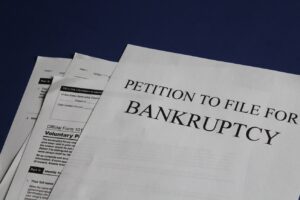BlockFi, the cryptocurrency lending platform, has made headlines with its recent application for voluntary Chapter 11 bankruptcy in the US Bankruptcy Court for New Jersey. This development has significant implications for the cryptocurrency industry and BlockFi’s stakeholders. Here’s a comprehensive overview of the situation:
Voluntary Chapter 11 Bankruptcy Filing
BlockFi officially announced its voluntary Chapter 11 bankruptcy filing. The cryptocurrency exchange platform revealed its decision to halt all activity, including withdrawals, in a tweet on November 10. Subsequently, on November 13, BlockFi confirmed that all activity remained frozen. The Chapter 11 filing was initiated as a strategic move to stabilize the company’s operations and facilitate a comprehensive restructuring process.

Purpose of the Bankruptcy
BlockFi has emphasized that the bankruptcy proceedings are aimed at stabilizing its business and enabling the negotiation of a robust restructuring agreement. This course of action is taken with the best interests of the company’s clients and stakeholders in mind. The bankruptcy filing is intended to provide the necessary framework to address BlockFi’s financial challenges effectively.
Cash Reserves
As part of its bankruptcy announcement, BlockFi disclosed having a cash balance of $256.9 million. This cash reserve will play a crucial role in ensuring the company has sufficient liquidity to support essential operations during the reorganization process.
Outstanding Debts
According to court records, BlockFi has significant outstanding debts to creditors, with unsecured claims totaling up to $729 million. FTX, one of BlockFi’s creditors, holds the second-highest unsecured claim, amounting to $275 million. BlockFi’s primary focus during the restructuring process will be to address payments owed to the company and its counterparties, including FTX.
Complex Business Dealings
The bankruptcy filing follows a complex series of events involving BlockFi and FTX. In July, a deal was inked, giving FTX the option to acquire BlockFi for up to $240 million. However, circumstances have taken a downturn, with FTX also declaring bankruptcy under Chapter 11 shortly before BlockFi’s filing. BlockFi anticipates potential delays in recoveries from FTX due to these developments.
Extensive Creditors
BlockFi’s financial situation is characterized by over 100,000 creditors with claims ranging from $1 to $10 billion in liabilities and assets, according to court filings. This wide-ranging distribution of creditors underscores the severity of the company’s financial challenges.
Previous Funding
Despite its recent financial troubles, BlockFi was well-funded in the past. In March 2021, the company successfully completed its Series D investment round, raising a total of $350 million and achieving a valuation of $3 billion.
Regulatory Issues
BlockFi’s financial woes come in the wake of regulatory challenges. Earlier this year, the United States Securities and Exchange Commission (SEC) filed charges against BlockFi for failing to register its retail crypto lending product and violating the registration provisions of the Investment Company Act of 1940. BlockFi agreed to settle these allegations by paying a $50 million penalty to the SEC and an additional $50 million in fines to 32 US states. According to recent documents, BlockFi owes $30 million to the SEC as part of this settlement.
This bankruptcy filing adds BlockFi to the list of cryptocurrency-related companies facing financial difficulties and regulatory scrutiny, underscoring the evolving and challenging landscape of the cryptocurrency industry. The outcome of BlockFi’s Chapter 11 proceedings will be closely monitored by the cryptocurrency community and financial regulators.




